Saskatchewan Cranes & Geese Trip Report (Sep 30 – Oct 5, 2025)
We’d seen so many large flocks of Snow Geese on the way that first morning. Although we were in a rush to get to the best Whooping Crane areas, we just had to stop and marvel at a huge flock of Snow’s field-feeding close to the road north of Blaine Lake. The sound and blackened sky that resulted when much of the flock took wing and circled quite close to us was truly awe inspiring. But as captivating as that was, we had to move on and get to the best Whooping Crane areas west of Marcelin. We didn’t have to go far. In a small wetland, we found our first flock of more than a dozen Whooping Cranes. A couple pairs had rusty coloured young with them, and we got pretty decent close-up scope looks and photos. As we drove on, we saw a few more quite distant and then found a really close-up pair with a young that eventually allowed us to step out of the vans and get even more amazing scope views and photos. We’d see many more that morning and a few that afternoon, but those first looks will no doubt remain etched in our minds, as will that amazing earlier experience with the Snow Geese.
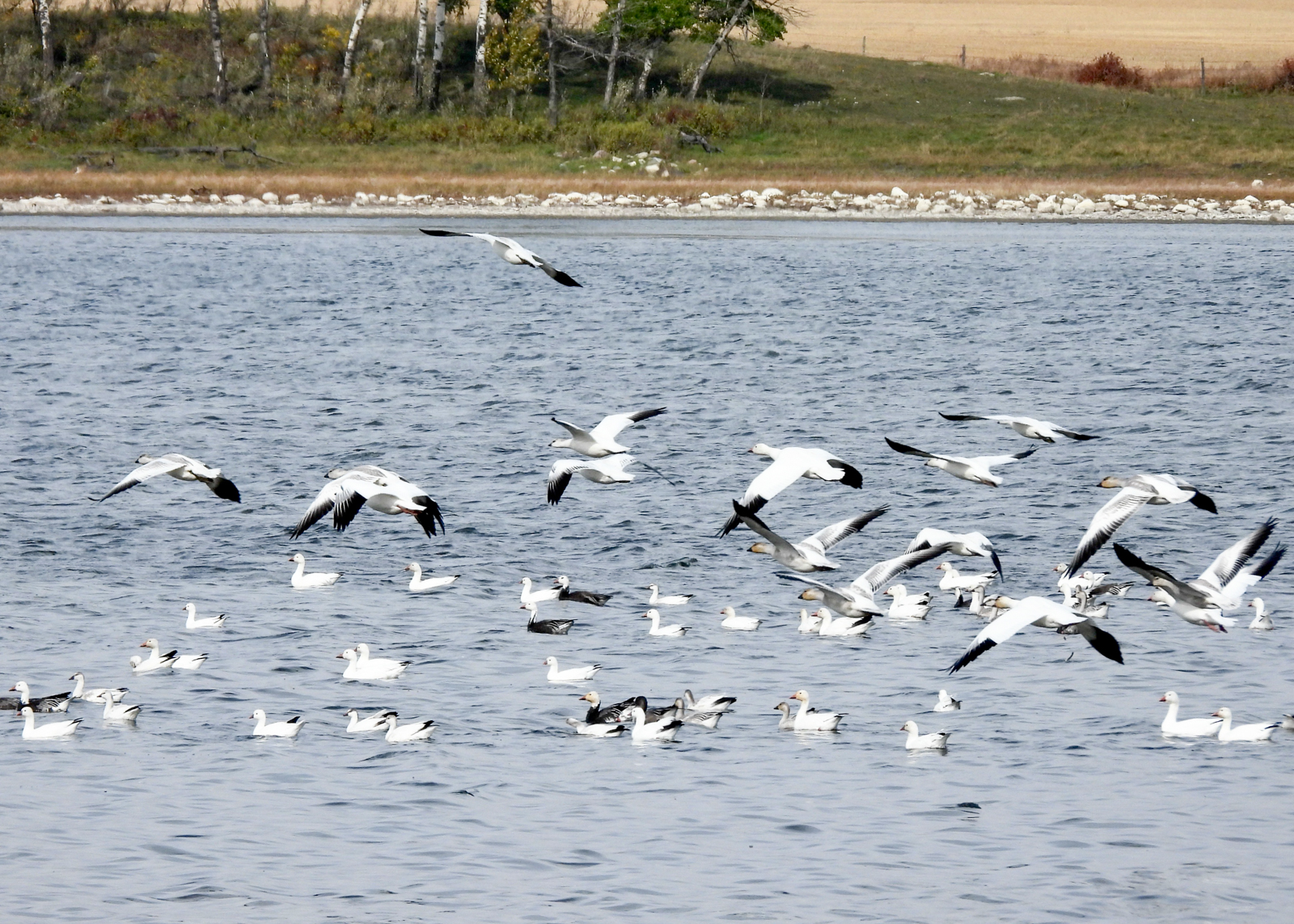
Snow Geese © Karen Bateman
Day 1
That first evening, we gathered at the Park Town Hotel in downtown Saskatoon for a meet-and-greet and got prepped for an exciting few days looking for the cranes and experiencing much of what the Saskatoon area and Prince Albert National Park had to offer. We had a really nice dinner in the hotel’s Four Seasons dining room and got further acquainted. After dinner, we retired early as tomorrow we would be headed out early to the best Whooping Crane area near Marcelin.
Day 2
After a 7 am breakfast in the hotel, we headed north and west of Saskatoon bound for Blaine Lake. We spotted a few small field-feeding flocks of Canada Geese and some larger flocks of Snow Geese on the way, plus a few other common species to start our day’s list. But unless we saw something really special, we didn’t want to delay in getting to the better areas for Whooping Cranes. After a quick pit stop at Blaine Lake, we proceeded north and stopped for that huge flock of Snows and then our first Whooping Cranes that were mentioned in the intro.
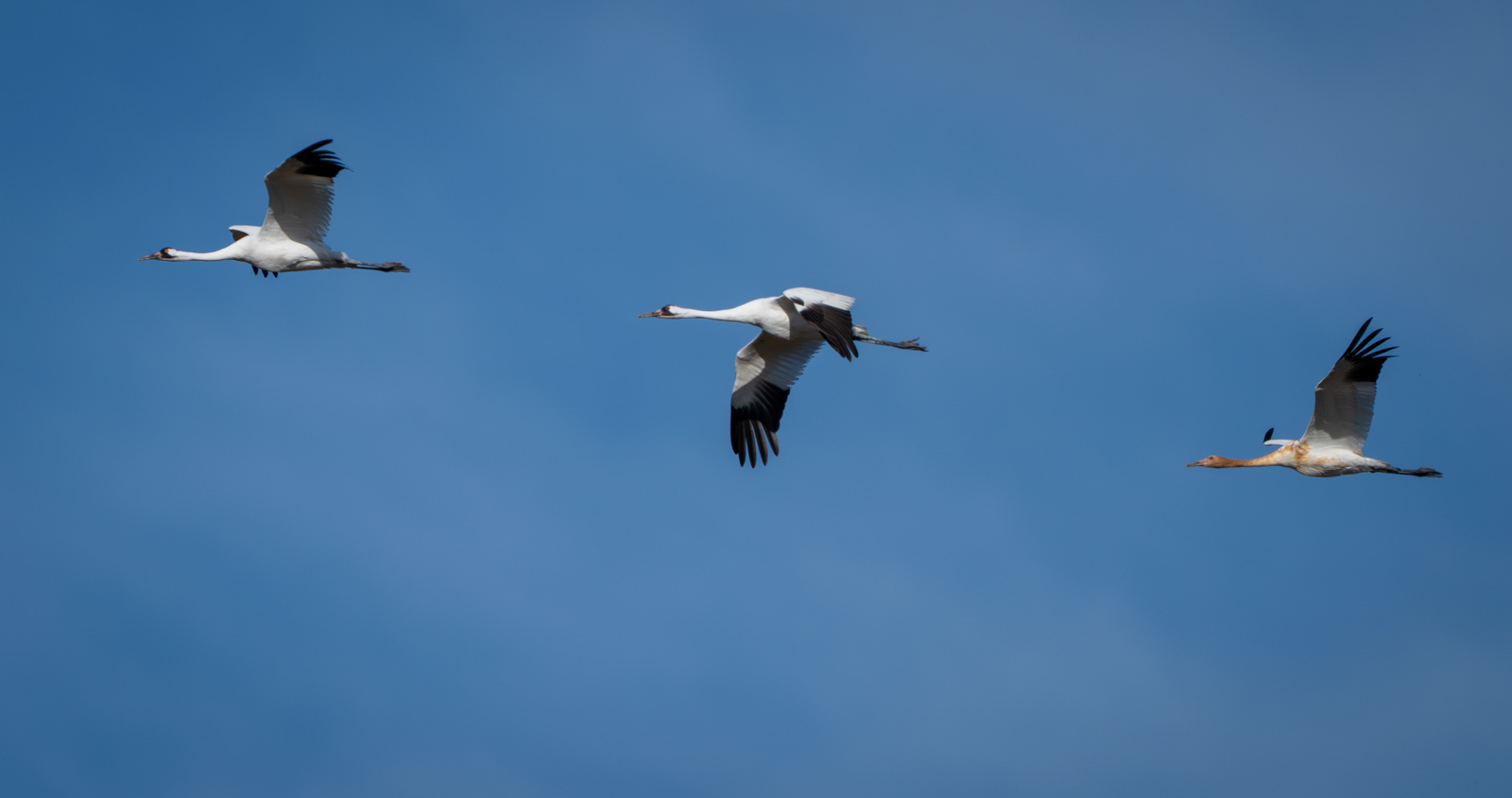
Whooping Cranes in flight © Deb Woeller
In between, we also had brief looks at a few other species we weren’t sure we’d get many of if any later on including an American Kestrel, Sharp-shinned Hawk, and a large flock of American Pipits (50 total today). But we were mostly interested in finding Whooping Cranes that morning, and by the time we had gone a few miles east to Marcelin, headed north for 3 miles and then west a few miles to a large lake called Muskeg Lake we had already amassed a total of 114 Whoopers (52 including an amazing 12 juveniles in the first group and on the way to Marcelin and another 62 on the 3-mile road west). All the latter 62 were observed at a distance from a hilltop not far from Muskeg Lake accompanied by at least 8 Sandhill Cranes. When some started flying back to Muskeg Lake where we suspect many roost during the day, we hurried that way and almost timed it right to intercept them as they cruised in at a nice low altitude.
Backtracking a mile we took a trail running north to the Leask road where we picked some more pairs of Whooping Cranes with young. Coming over a slight rise we spotted a really close Whooper threesome in a pond but they were so close that all we could do was marvel from within the vans for a few minutes before they flew off a short distance. We spotted a few other birds in our travels that morning including 3 Turkey Vultures (an unexpected 8 for the trip), some small flocks of Lapland Longspurs that never lit long enough or close enough to give us a look, our first of 8 Northern Harriers and 8 Bald Eagles for the day, and at least 15 Richardson’s Ground Squirrels in a pasture. Immediately west of Leask, we stopped at a large lake that was covered with 10s of thousands Snow Geese (arriving at a very conservative estimate of 100,000 for the day!). We also got our first looks at a few Ross’s, Greater White-fronted and Cackling Geese, at least 150 American Coots, an Eared Grebe, some Greater Yellowlegs, our first Black-bellied Plovers, and quite a few farther off ducks that we largely overlooked as lunch awaited us. At Leask we stopped at an open park and had a well-stocked picnic lunch.

Whooping Cranes in field © Deb Woeller

Greater White-fronted Geese © Sumeet Mukherjee
Heading back for another look at Leask Lake, we looked over the ducks more carefully finding some straggler Blue-winged Teal, and a few Common Goldeneye, Ruddy and Ring-necked Ducks, Lesser Scaup, Canvasback, Redhead and Bufflehead, along with the expected dabblers (Shoveler, Gadwall, American Wigeon, Mallard, Pintail and Green-winged Teal). Among a large group of Greater Yellowlegs, a smaller shorebird turned out to be a Stilt Sandpiper. At a large lake a little further west and south, there were many more Black-bellied Plovers (40 today), a few American Golden Plovers (6), a Pectoral Sandpiper, and another Eared Grebe. Proceeding south towards Marcelin we would find a few more far-off Whooping Cranes (an amazing 137 including 17 juveniles for the day) but we would find little else of significance except for 3 out of place soaring American White Pelicans. In Blaine Lake we spotted a couple Chipping Sparrows. From that town, we took a back road south to Petroka which yielded a couple Sharp-tailed Grouse and a flock of 10 Gray Partridge. It was time to head back. Dinner at the hotel had been so good and convenient, we went back there and toasted a very exciting first day of the tour.
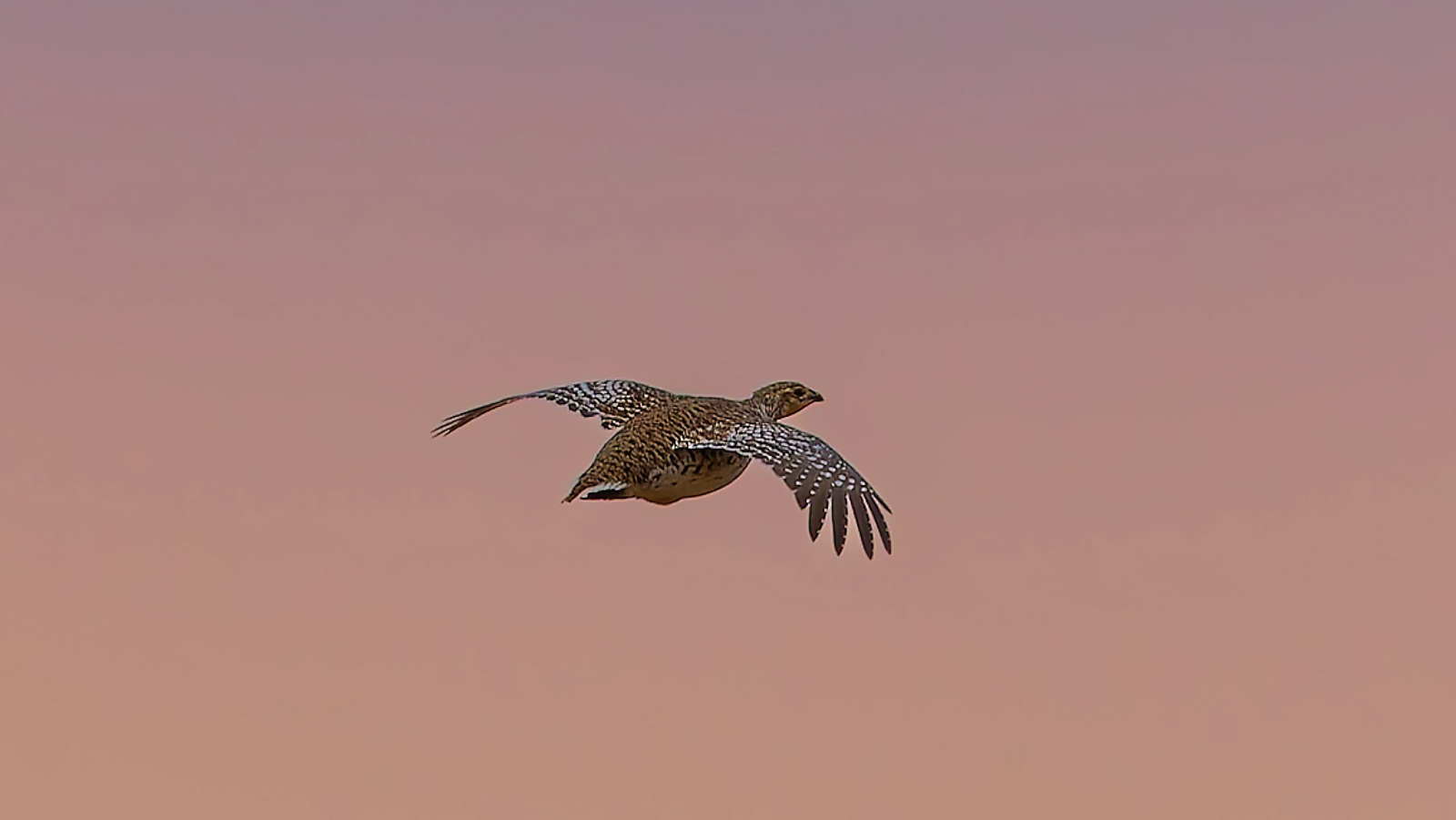
Sharp-tailed Grouse © Sumeet Mukherjee
Day 3
Today we would grab bag breakfasts from the hotel and get an early (7am) start to Prince Albert National Park. Along the way we picked up 3 Grackles, a Red-winged Blackbird, and the first of 3 Belted Kingfishers for the day. After stopping in Prince Albert for gas and some fresh coffee and snacks, we carried on to Emma Lake where we got our first and only Evening Grosbeak, Harris’s Sparrow, both Nuthatches, White-crowned & White-throated Sparrows, and a heard only Boreal Chickadee. Before hitting the park we had a very cooperative Coyote and our first of 10 Hooded Mergansers for the day.
In the park we stopped at a very nice riverside picnic area for lunch where we were greeted by a close-up Lapland Longspur, Pileated Woodpecker, Boreal Chickadee, and some Canada Jays. Afterwards, we stopped at Sandy Lake – good for some Red-necked Grebes, Common Loons, Double-crested Cormorants and a cooperative Richardson’s Ground squirrel. Before hitting the Narrows we took some group shots, and had brief looks at a Ruffed Grouse.

Lapland Longspur © Sumeet Mukherjee
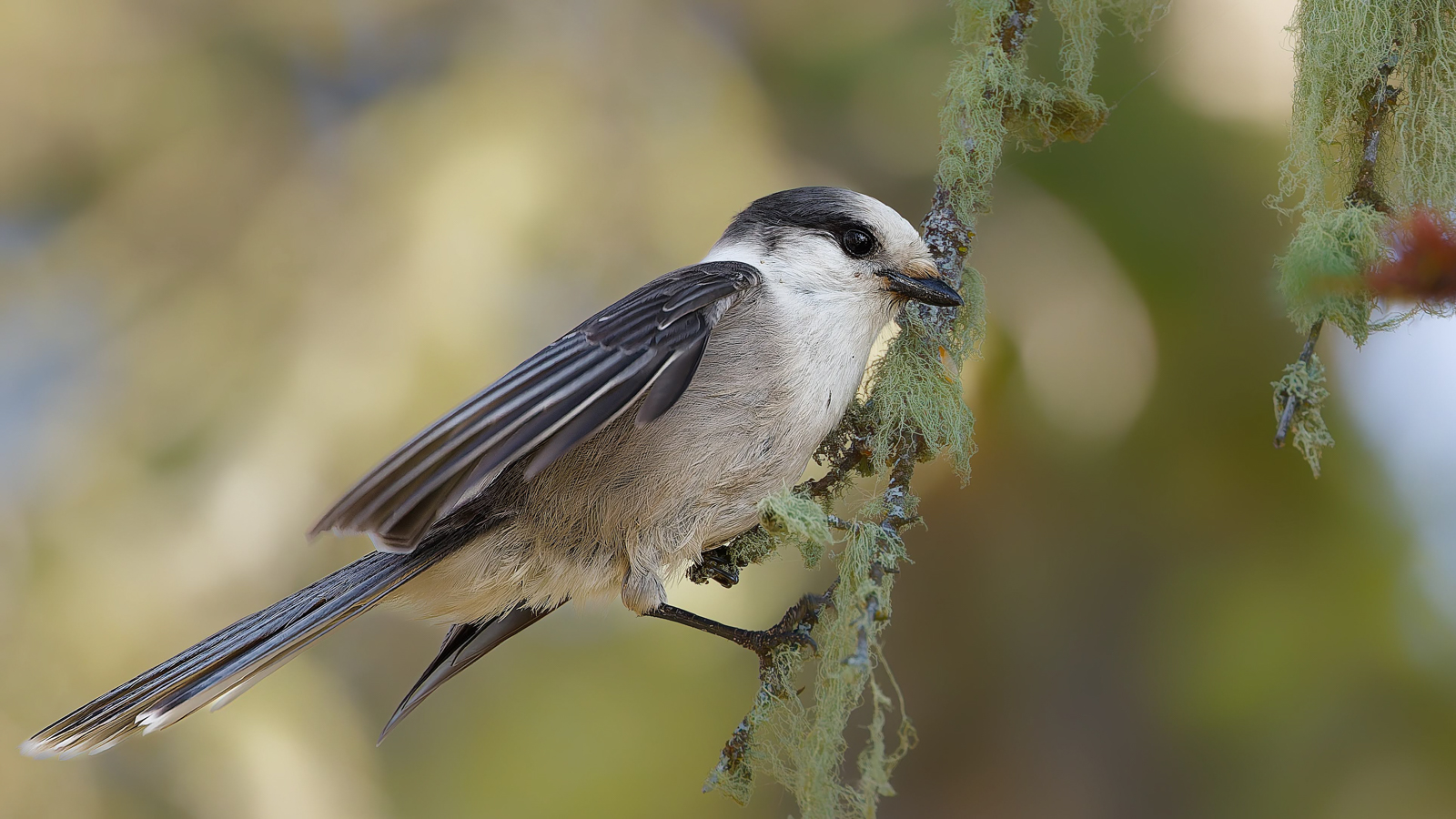
Canada Jay © Sumeet Mukherjee
Narrows Road was superb for mammals getting close up looks at 3 Beavers, an extremely attractive Cross Fox, and a massive bull Elk. For birds, we had more Common Loons, Pileated Woodpecker flybys, Canada Jays, and finally a couple cooperative Ruffed Grouse. At Waskesiu, we had many more Elk, a couple Franklin’s Gulls along the beach, and a quick look along the Red Deer trail gave us really good looks at a Pileated Woodpecker and some heard only Pine Siskins. It was on to the Hawood Inn, where we checked in, had dinner, and superb looks at some northern lights after dark.

Cross Fox © Josh Dewitt
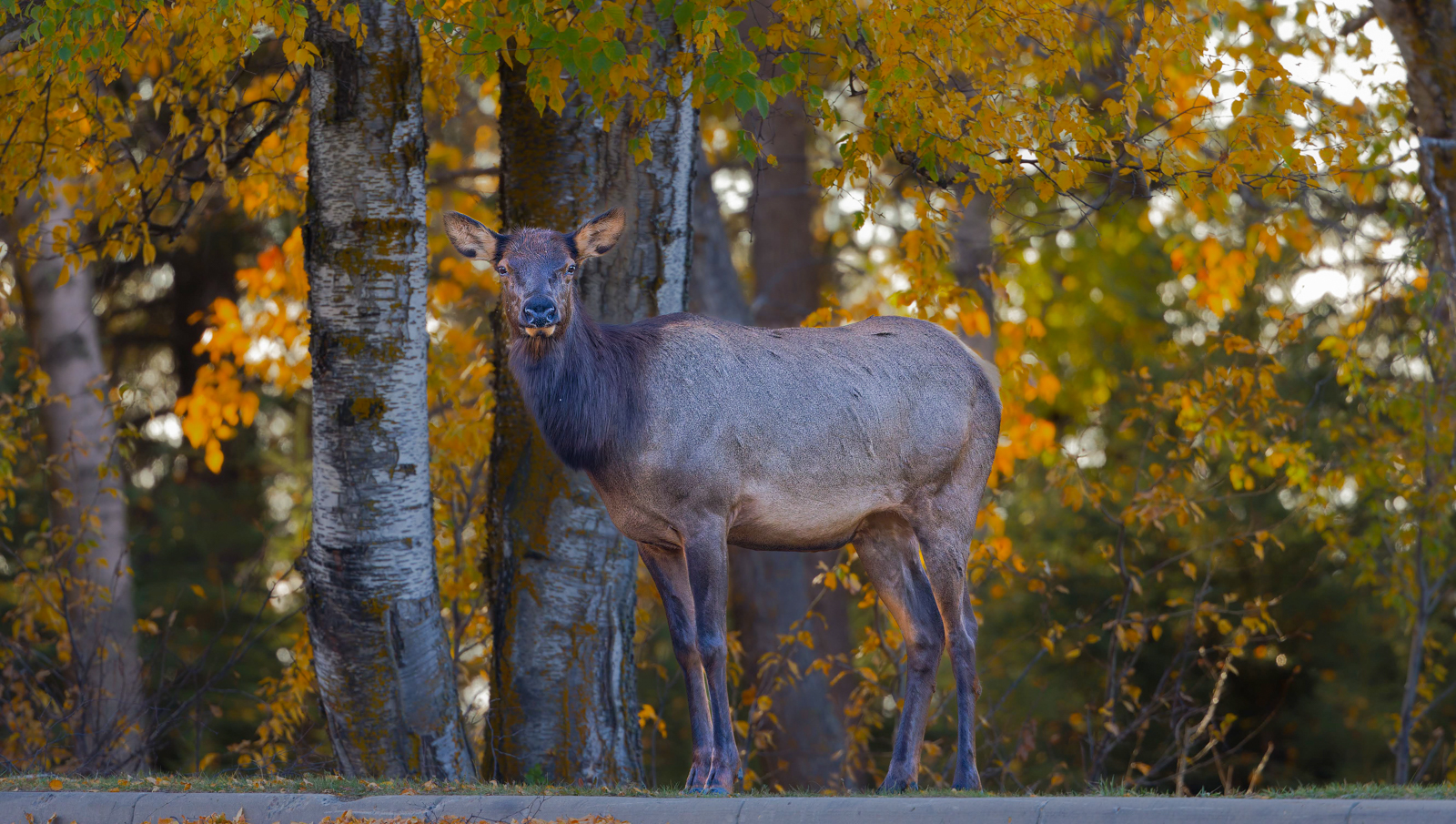
Elk © Sumeet Mukherjee
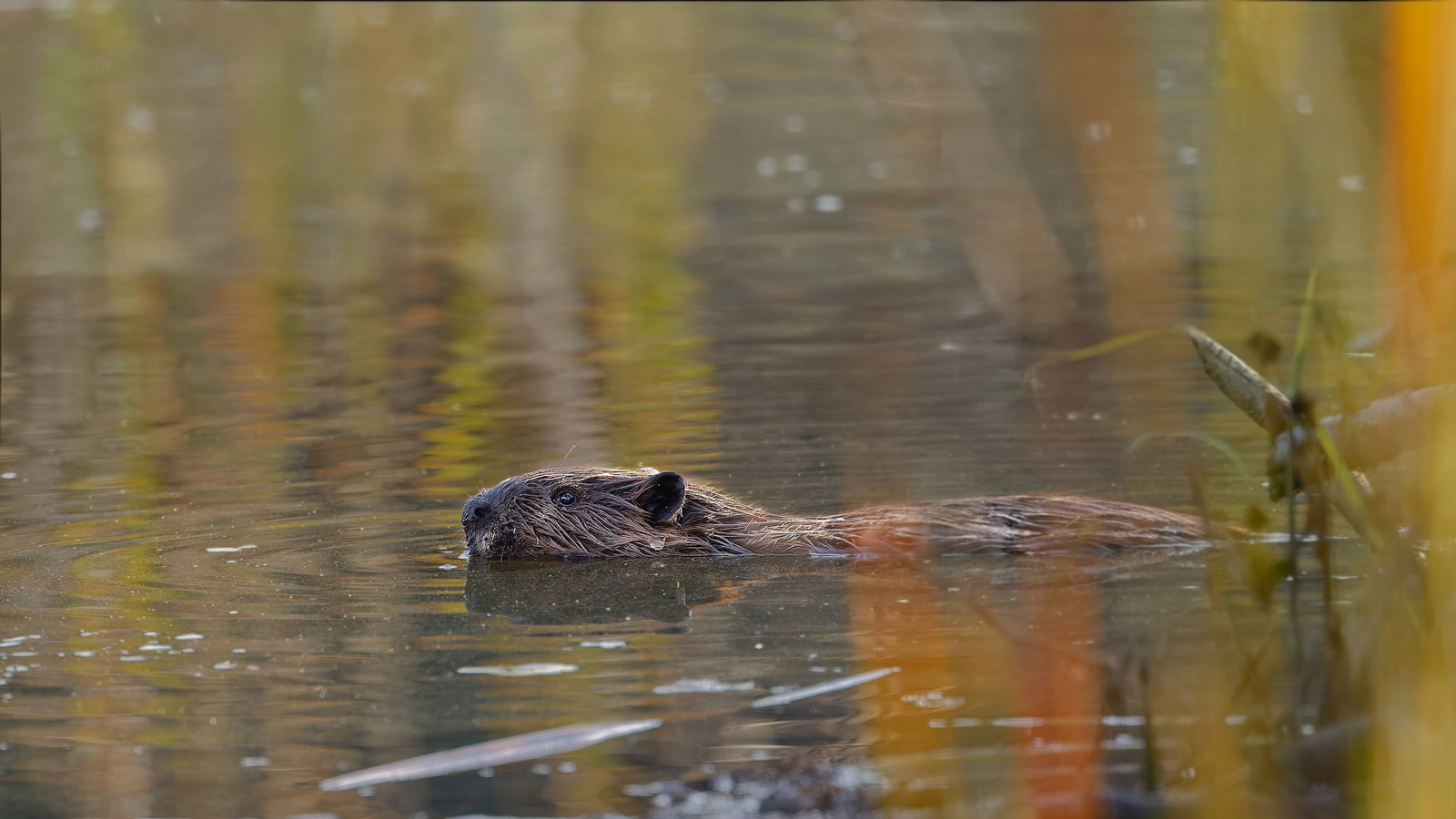
Beaver © Sumeet Mukherjee
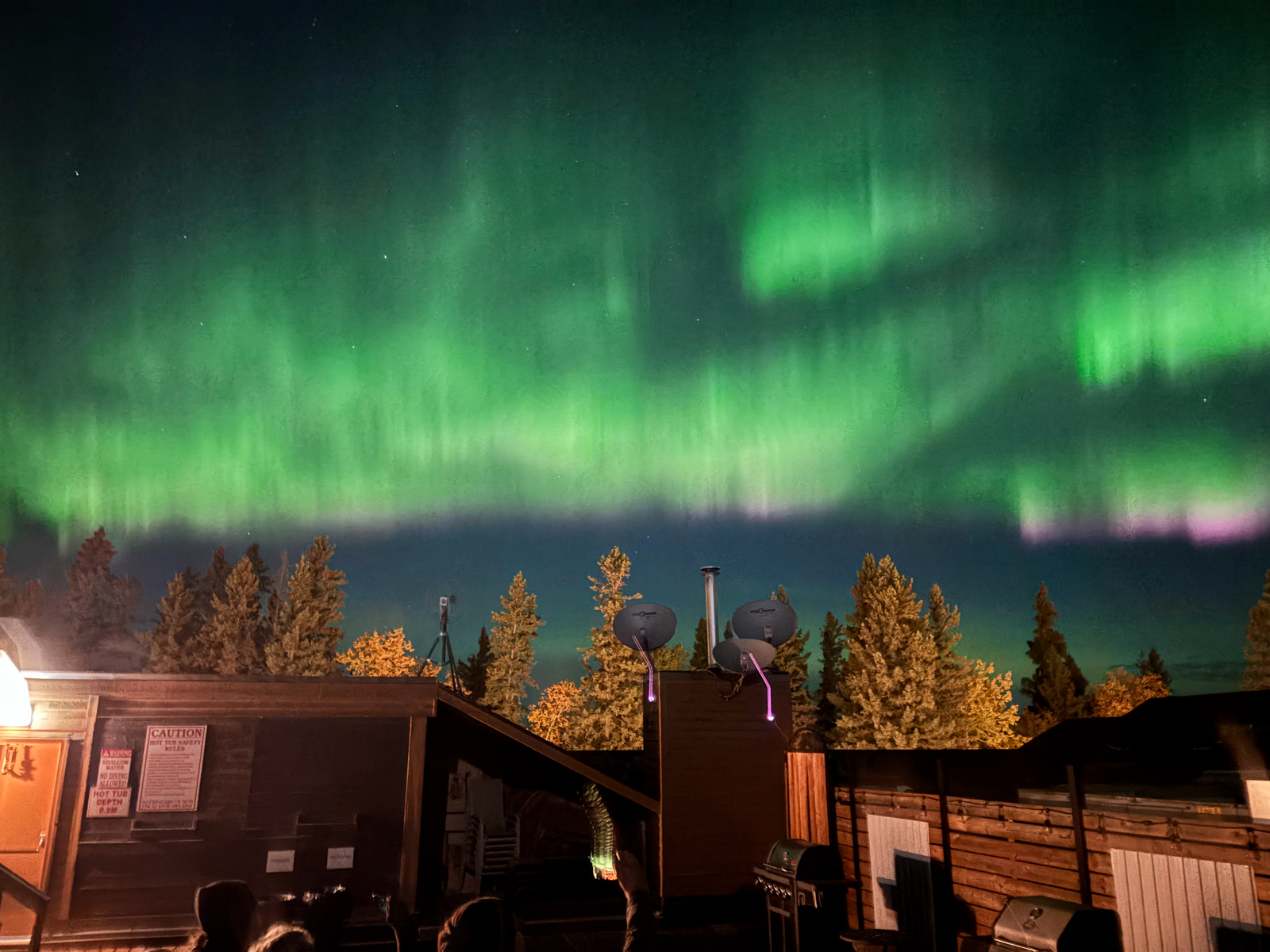
Northern Lights © Ken DeSmet
Day 4
Today, we got to spend another half day plus in the Park. We headed back to the Red Deer trail getting a van-side bull Elk on the way.Today the trail was much more productive yielding great looks at Boreal Chickadees, Pine Siskins, a Golden-crowned Kinglet, a Rusty Blackbird, heard only Redpolls and Snow Bunting, close-up views at a couple Bald Eagles, and a cute playful sequence between a Merlin and a magpie. We still had not found any of the three-toed woodpeckers so we walked a stretch of the Red Deer trail along the beach. Heading back to the vans, Ken and Josh got onto an American Three-toed Woodpecker which Josh followed around a few blocks while Ken went to pick up the participants and we eventually located Josh and the woodpecker.
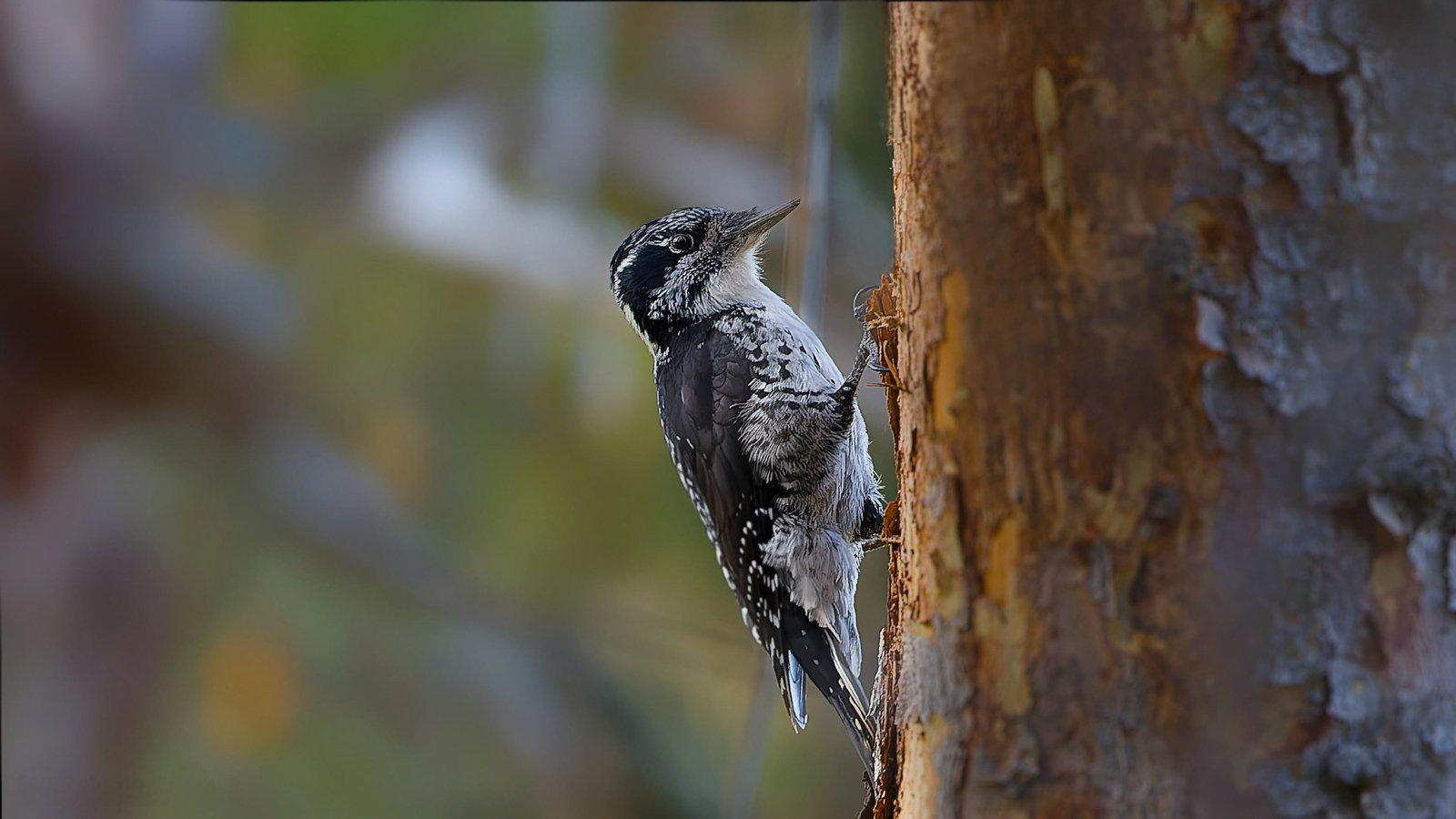
American Three-toed Woodpecker © Sumeet Mukherjee
It was on to Birch Bay on the north side of Waskesiu Lake for lunch, getting more Canada Jays, Pileated Woodpeckers and a Northern Flicker driving there. We had one more destination in the park, the very much enjoyed Boundary Bog Trail where some feeding White-winged Crossbills and a Hermit Thrush were just gravy. We wanted more looks at Whooping Cranes so we headed back to Marcelin spotting a soaring Golden Eagle just outside the park, and a couple of very large flocks of Whooping Cranes west of Leask and west of Marcelin – altogether 63 birds including 9 juveniles. Heading back home, one of the vans lucked into a Moose, but unfortunately the other van was a few miles behind having stopped in Blaine Lake for a pit stop did not get to see it.
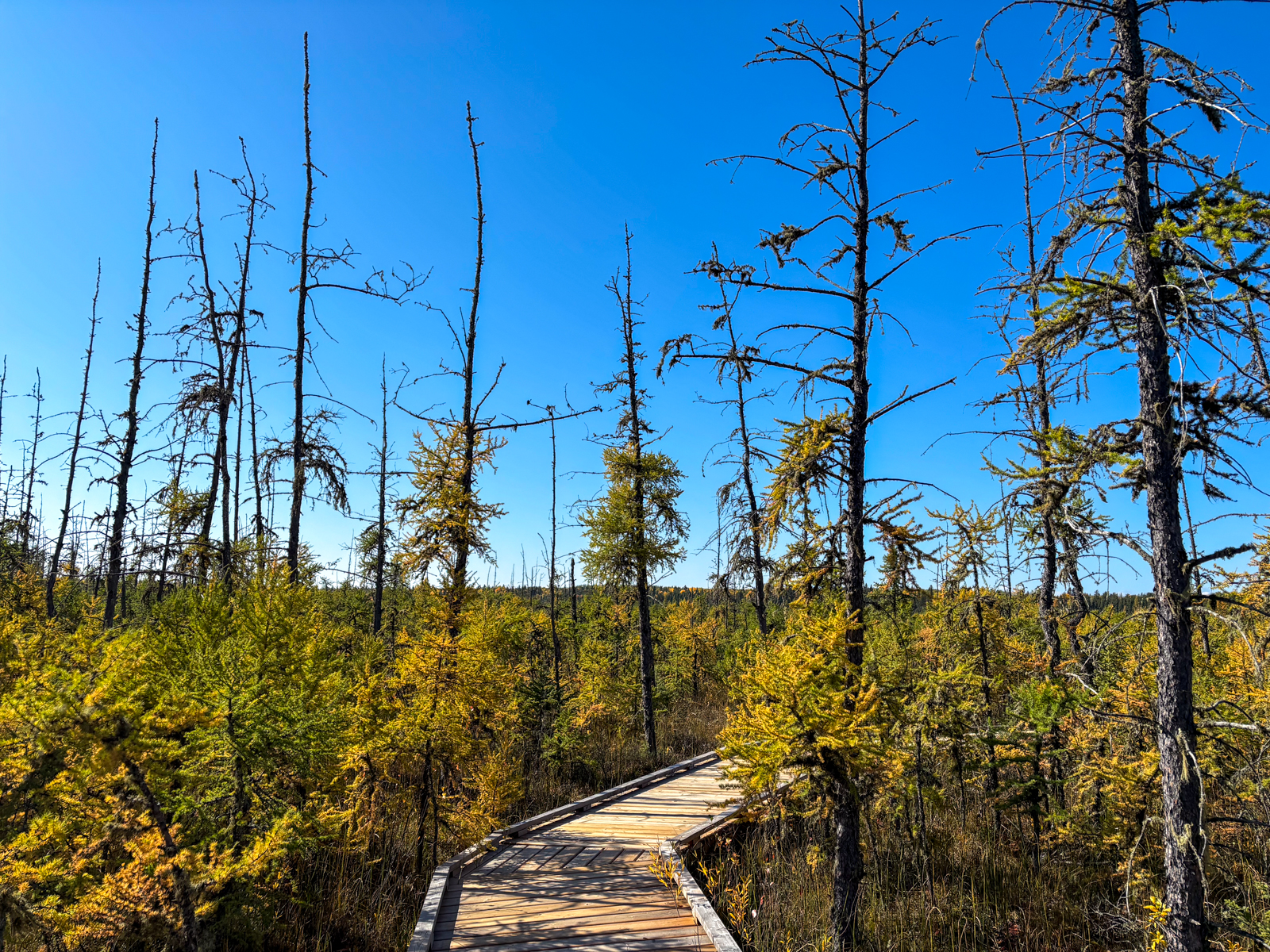
Boundary Bog Trail © Tamara Lucyshyn
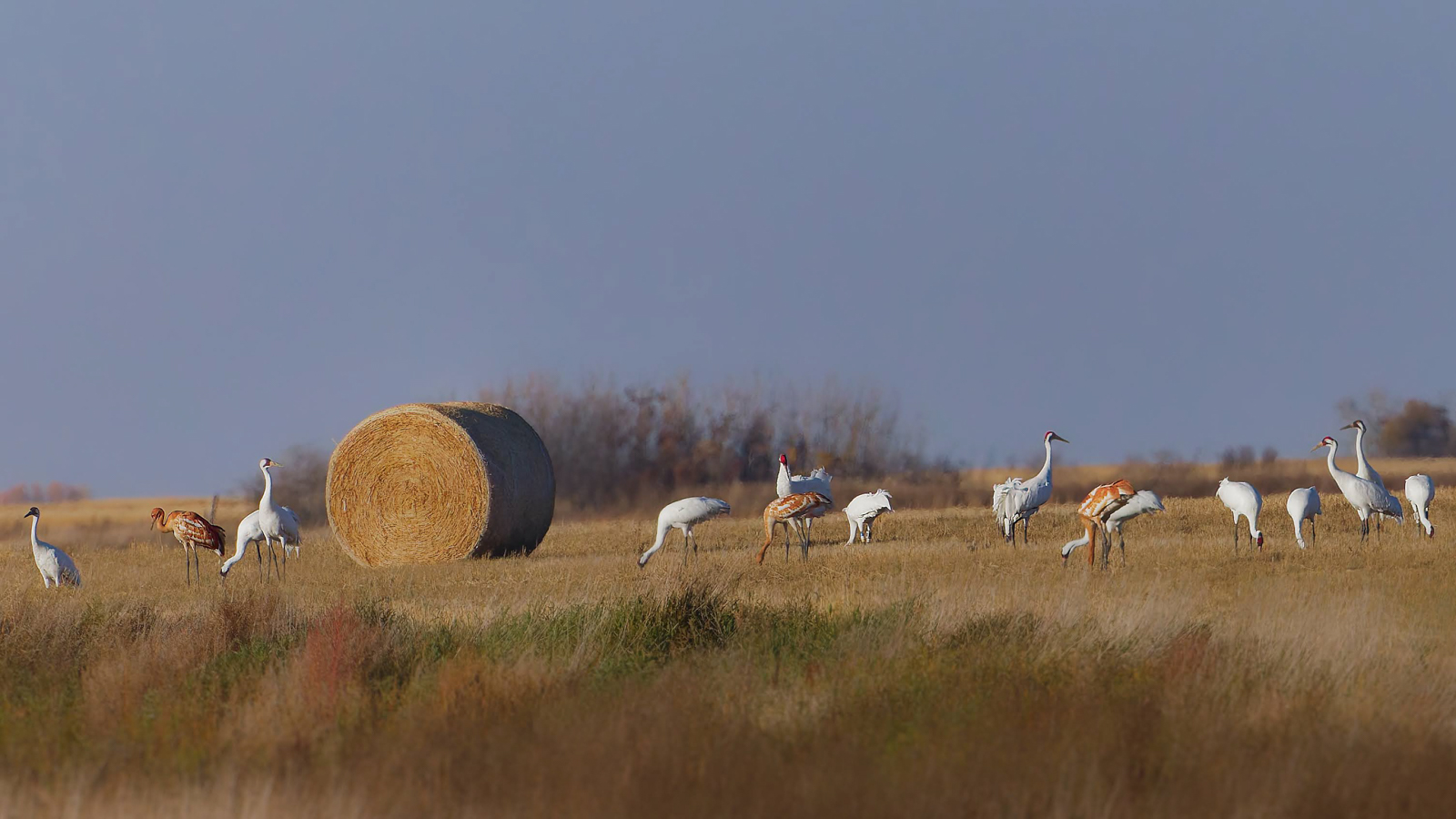
Whooping Cranes in field © Sumeet Mukherjee
Day 5
Today we would focus on sites in Saskatoon and then head south and east of the city. First up was a walk to the Weir (not that productive with just a couple White-throated and White-crowned Sparrows, Yellow-rumped Warblers, and some Least Chipmunks). The walk back along a back lane was better, however, as we spotted a couple House Finches, 30 Robins, and a late mixed flock of warblers (mostly Yellow-rumps, but least one Orange-crowned, Tennessee, and Cape May Warbler). The Forestry Farm was next – rather quiet but we did get onto more Golden-crowned Kinglets, House Finches, and some Purple Finches. We had some extra time before lunch so we took a back road from Clavet to Blackstrap spotting some Western Meadowlarks, a Morning Dove, and a group of Sandhill Cranes. Near Blackstrap we got onto a few Franklin’s Gulls, and from the causeway near the park were some of the days 400 American Coots and a Western Grebe. In the park before and after lunch there were many Cedar Waxwings, and in the mostly White-crowned and White-throated Sparrow flocks along the road we spotted a few Song Sparrows, and at least one Lincoln’s and American Tree Sparrow.
Heading back to the Clavet area, and jogging north and east we ran into a large flock of Sandhill Cranes and an amazing mixture of shorebirds at Chevriot Lake (12 Killdeer, 3 Semipalmated and 4 Black-bellied Plovers, 3 Semipalmated, 30 Pectoral, 15 Baird’s & 4 Stilt Sandpipers, 30 Greater & 6 Lesser Yellowlegs, and 12 Long-billed Dowitchers). From there to Crawford Lake there were most of the day’s 45 Western Meadowlarks and 1800 Sandhill Cranes.
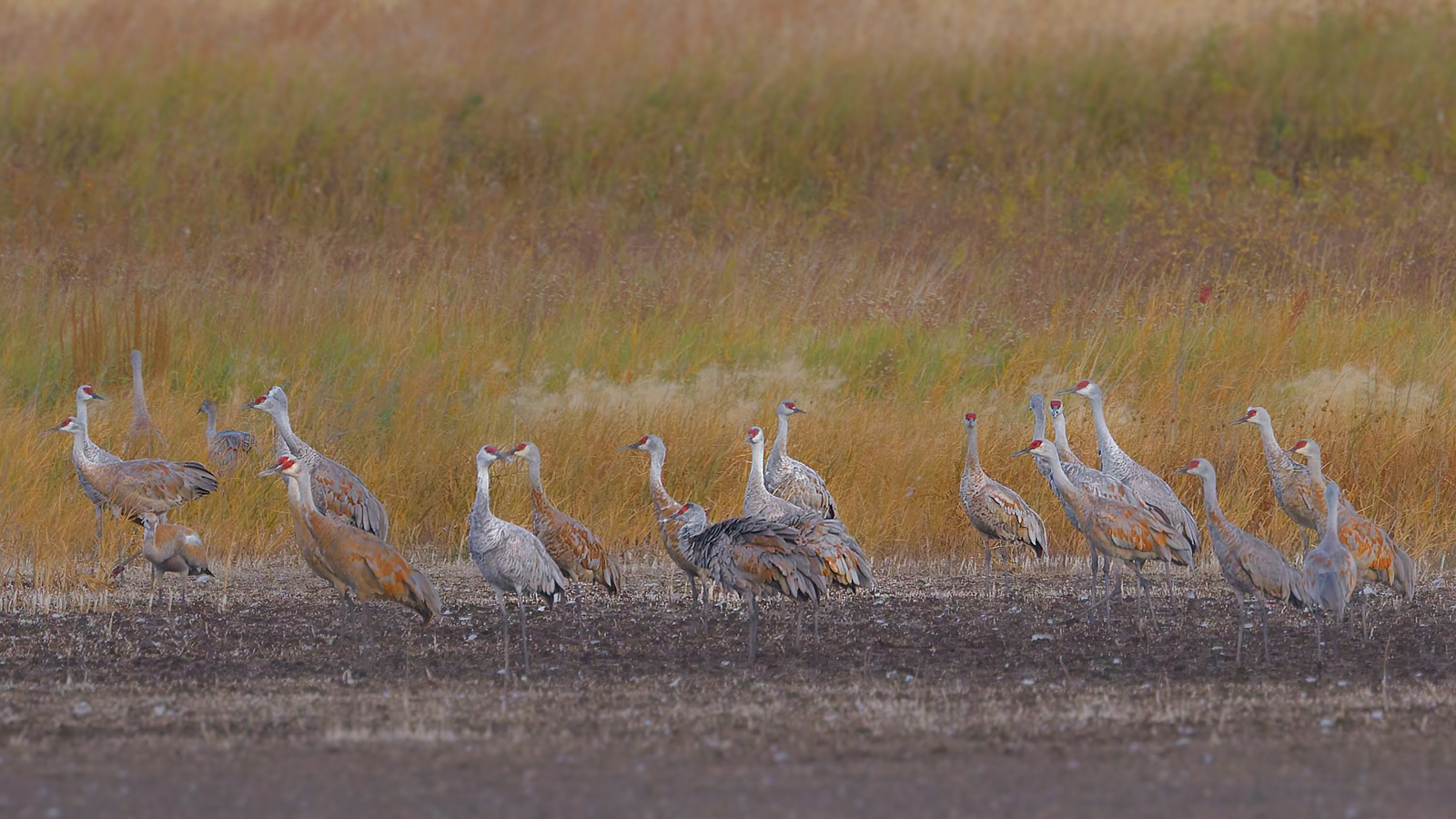
Sandhill Cranes © Sumeet Mukherjee
Crawford Lake was crowded with a variety of ducks, and thousands of Snow Geese, with a few Canada’s, Cackling, Greater White-fronted and Ross’s Geese mixed in. But the real stars of the show were 50 Tundra Swans. On the way to our next destination, Porter Lake, we found 3 Brewers Blackbirds. Porter was alive with ducks; we counted just a few of the closer ones including many of the day’s 8 Blue-winged & 100 Green-winged Teals, 200 Mallards, 40 Northern Shovelers, 30 American Wigeon, 15 Gadwall. For divers, there were at least 220 Canvasbacks, 25 Redhead, 45 Lesser Scaup, 20 Bufflehead, and a handful of Ring-necked and Ruddy Ducks. This lake also produced the tour’s only Pied-billed and Horned Grebes. We didn’t have time to count everything as it was time to head back. We celebrated another banner day and a fantastic tour. After we had enjoyed our last meal together, we each got to reminisce about our favorite species and/or moments from the trip – and there were more than enough to go around a second time! Afterwards we said our goodbyes as some of the participants had early morning flights.
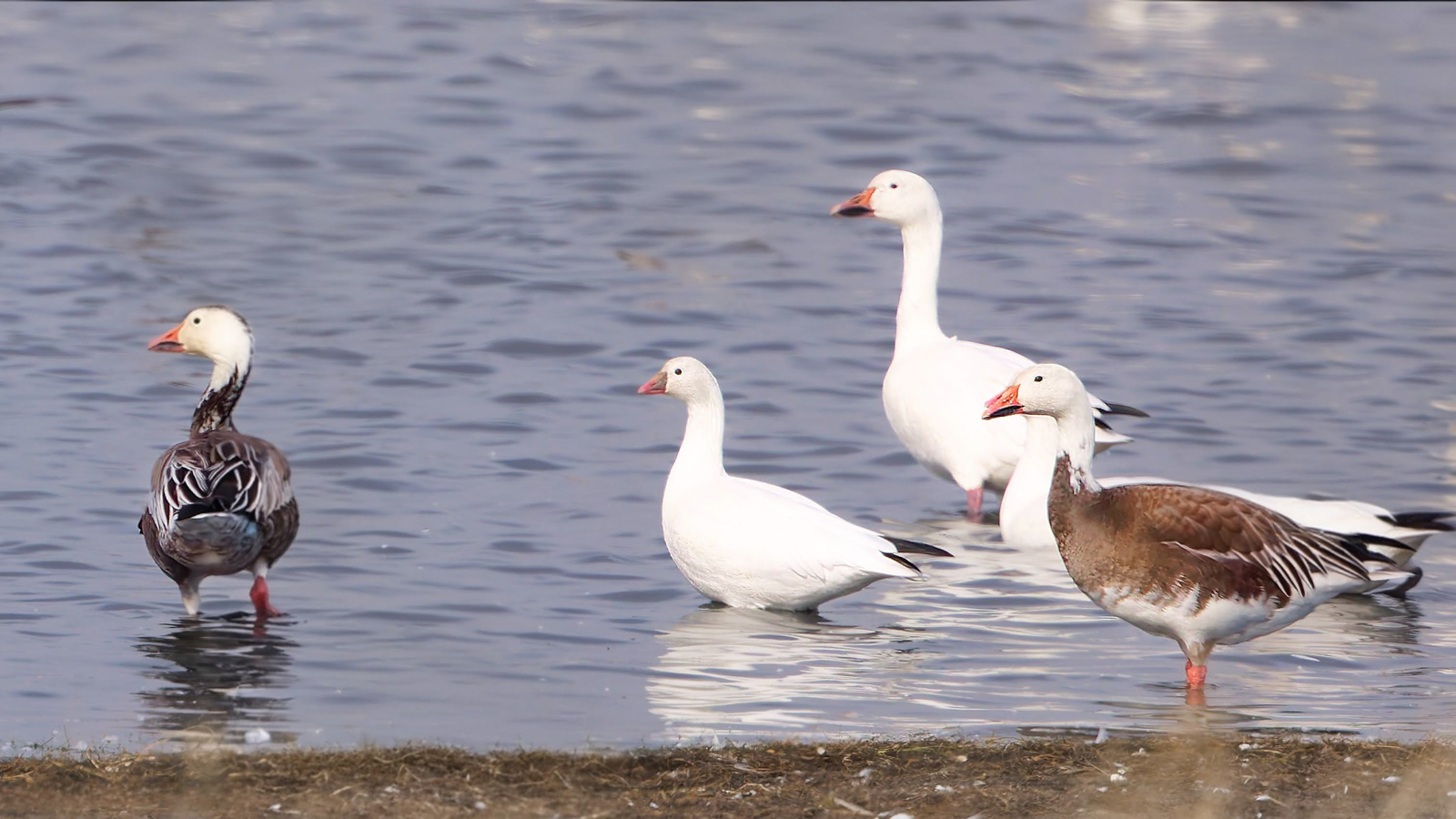
Ross’s Goose and Snow Geese © Sumeet Mukherjee
Day 6
A few of us met over breakfast the following morning. In retrospect, this group had meshed very well, we’d had a great time, and accumulated a record 110 species of birds, 11 mammals, and a whopping 137 Whooping Cranes (one quarter of the world’s wild Whooping Crane population)!
Josh and I thank you for your great company, camaraderie, and stories. Here’s hoping we’ll see some of you again in the future, perhaps on an Eagle-Eye tour in Manitoba or some other exotic location.
Your ever-appreciative guides, Ken & Josh.

Our group




